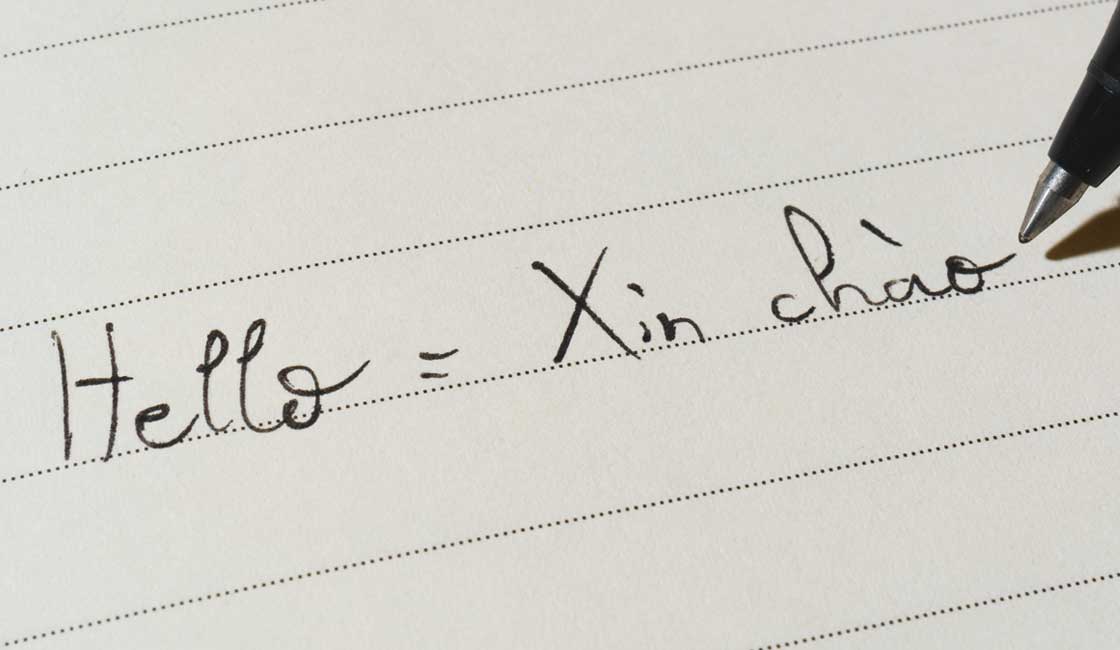
Vietnam is not only beyond beautiful but also incredibly fascinating. You can live here for years or visit multiple times and it will still surprise you. For travelers, a trip to Vietnam is guaranteed to astound you, whether it be out of breathtaking awe or astonishing culture shock, but it is sure to keep you coming back for more.
Here are our favorite, most interesting, and fun facts about Vietnam and its culture, numerous examples of which you will come across on a daily basis throughout your vacation, and many of which will be very useful to know before you go!
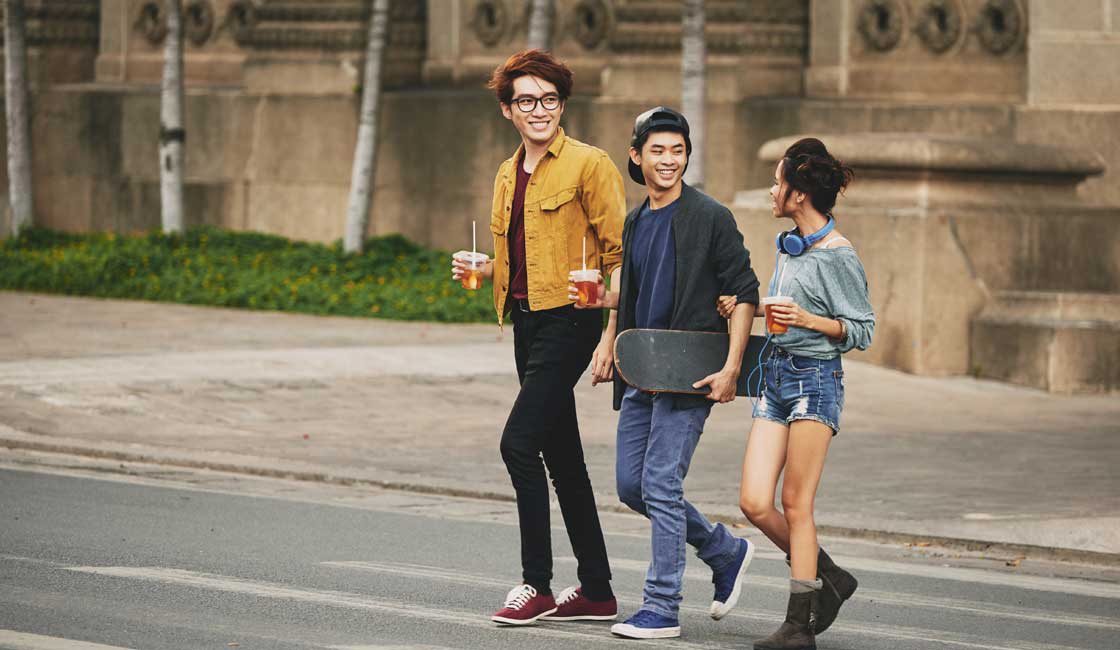
They call each other ‘Em’
The Vietnamese don’t address each other by name. As in many Asian cultures, in Vietnam, everybody is called “sister”, “brother”, “uncle”, etc. Even married couples use the word “sister” or “brother” when they speak to each other. This is the Vietnamese way of showing respect. They might use your name by saying “sister Kathy” (Em Kathy), but to just call out a name would be considered rude.
The word “you” isn’t really in use either, in Vietnamese the sentence “How are you?” would sound “How is sister/brother?”
Since everybody is called a sibling or other family member, it is important to know the age hierarchy, in order to use the adequate name:
There are more rules to it than that, and within the family, it gets considerably more complicated, but for the Vietnamese, it’s highly important to apply these rules correctly and never offend anyone, especially an older person in the family.
The Vietnamese language is not only tonal, but every word is monosyllabic. So for every sound you make, there will be 6 different ways of pronunciation and with a slight change of tone, you may change the meaning of the word completely.
As a result, it tends to be hard for the Vietnamese to learn English pronunciation and many chop English words into single syllables. On the flip side, for foreigners to master the Vietnamese tones is nigh on impossible.
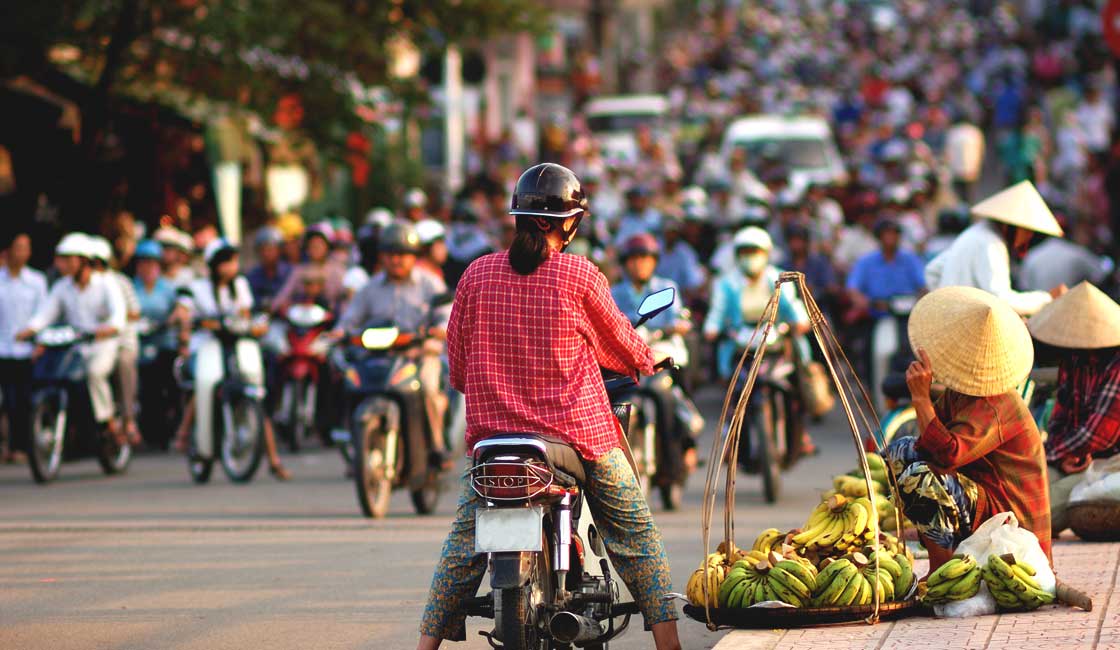
Fruit drive-thru
When you look at the streets in big Vietnamese cities, like Saigon, you just see chaos. The thought of crossing the street makes you a bit dizzy, let alone the prospect of driving on those streets. But if you look a little closer, you will notice there are some rules being adhered to, even though they may not be entirely sensible from your point of view:
Everybody tells you that when you are crossing the street, you should just walk at a steady pace and all traffic will go around you. That is largely true, and you should indeed just cross the street, walking slowly, never running or stopping suddenly. But there is an exception to this rule – the cars won’t actually go around you, or really stop. Rule of thumb: give way to cars, let bikes go around you.
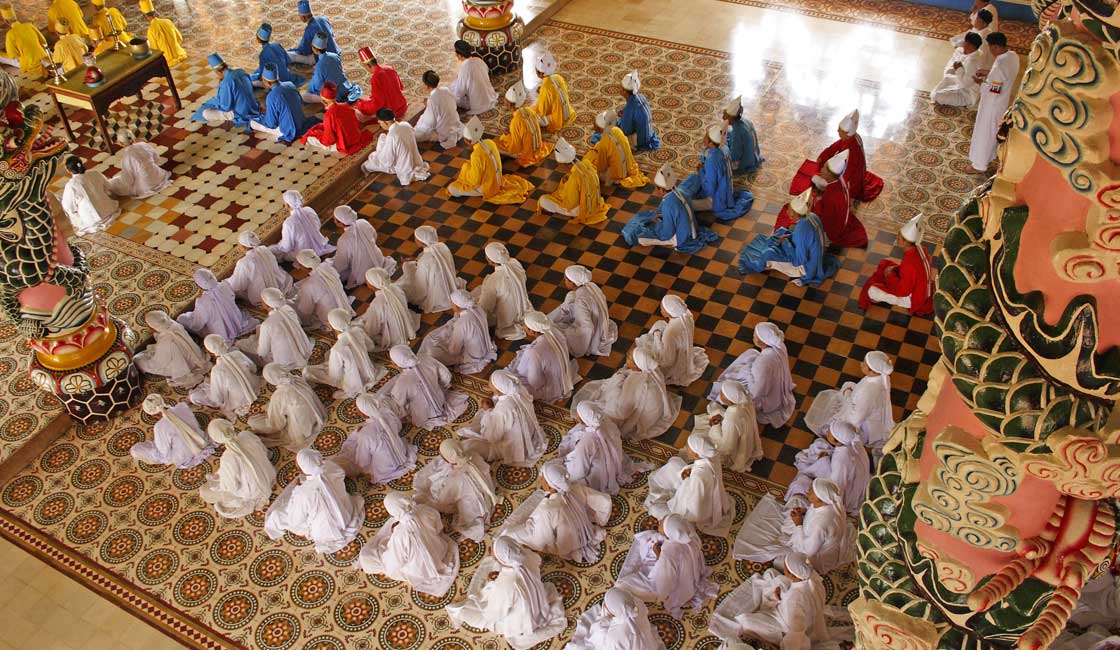
Functions in Cao Dai distinguished by the outfit color
In the 1920s a Vietnamese office administrator received a vision of the “the Divine Eye”. Long story short, he created a religion that worships the prophets of all main religions and several philosophers: Buddha Shakyamuni, Lao Tze, Confucius, Jesus Christ, Jiang Ziya plus Muḥammad, Thomas Jefferson, Victor Hugo or Joan of Arc.
The main message, in condensed form, is (unsurprisingly) love and respect for others. You are welcome to observe the ceremony in any of Cao Dai temples, the main one located in Tay Ninh, 2 hours drive from Saigon.
With over 2,500 miles of coastline, Vietnam relies heavily on fishing economically and gastronomically – the sea has been feeding the country forever. Fishermen believe that whales protect them when they are out at sea and on many occasions help the boats find the shore when conditions are extremely bad. There are countless stories of lives saved by a whale, who guided boats to safety during a storm.
Whale worshipping is widespread along the coast but strangely it is more common in the central parts of the country. Old boats are converted to shrines and temples or new temples built. The altars are filled with whale bones and the fisherman gather there to pray for safety and prosperity at sea.
The North and south regions of current Vietnam were not one country until the 17th century. For over a millennium the Dai Viet people, the largest of many ethnic groups in Vietnam, lived in the region of what today is the north of the country and Central Vietnam (Da Nang and Nha Trang) belonged to the Champa Kingdom. The impressive traces of that period can be seen mainly in My Son.
The Cham and Dai Viet was ethnically and culturally very different and stayed enemies for centuries. The Cham were gradually defeated by the Dai Viet after the latter regained their independence from China and started the many centuries-long march southwards, pushing the Cham off their lands. Today a small population of Cham people still live in Cambodia, southern Vietnam, and Thailand.
The meaning of the word Vietnam in fact is the Viet people going south (Nam). Current Vietnamese history books on the subject tend to omit the existence of the Champa Kingdom.
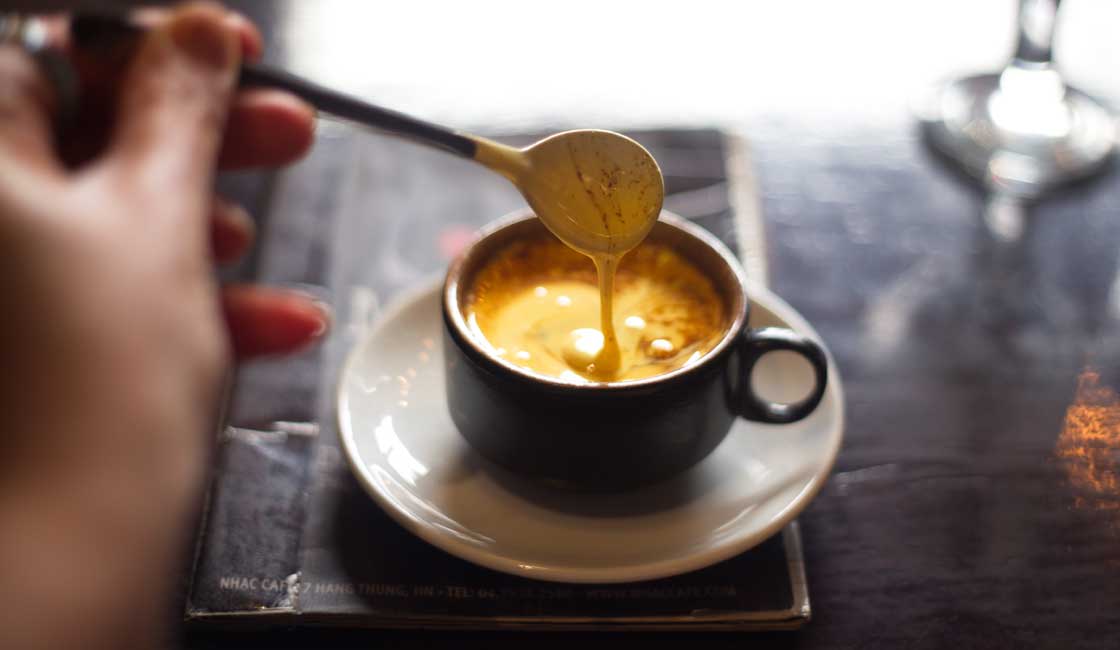
Egg coffee at its best
Vietnam is the second-largest coffee producer in the world after Brazil. The first coffee was brought here by a French priest in the mid 19th century. Today the Vietnamese Robusta is one of the best in the world and exported mainly to the EU.
Vietnamese coffee is served sweet and strong, on ice, often with sweetened condensed milk. Recently, traditional egg coffee has been making a big come-back in cafes.
Throughout its history, Vietnam has seen many wars and periods of occupation (indeed Vietnam war sites are a popular draw for tourists) but the country has retained its identity through folk tales and poetry. There are many heroes and heroines in Vietnamese history and stories about them are a very important part of the culture. These famous characters are often quoted and play a prominent role in modern-day songs and poems and continue to provide important moral guidance for many.
It is also very common to see young people spending time in parks and cafes, playing guitar and singing popular and traditional songs. Having a “soft side” or showing tears by men is not considered unmanly at all.

Football celebrations
Not only do the Vietnamese love watching soccer, but they also love playing. The National Football team has been gaining international recognition in recent years.
When the Vietnamese team won the SEA games in 2019, entire cities took to the streets to celebrate. In Ho Chi Minh City, after a national side victory, main roads jam for hours with all the fans riding with flags on their motorbikes in celebration.
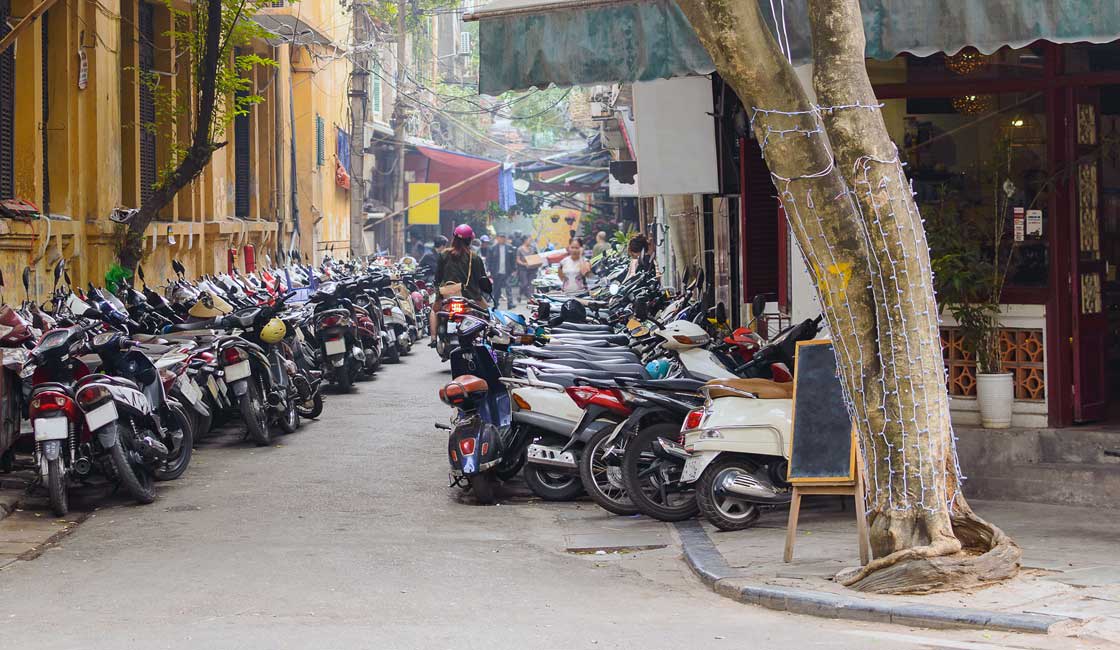
Park your motorbike here
Sidewalks in cities like Saigon simply should be called “siderides”. With the enormous volume of traffic, bypassing a jammed street by riding on the sidewalk is common practice. No matter really since the sidewalks aren’t really used for walking anyway (no one really walks in Saigon anymore) – you are more likely to see pop-up restaurants and coffee shops, or makeshift bike parking lots than pedestrians.
If you do decide to try to get somewhere on foot, you’re more than likely going to have to venture into the street (see point 4 above), or walk right past people having their lunch. Don’t worry – it is acceptable to do this, but you may find yourself joining them for a snack!
From the restaurants and cafes to the street stalls – freshly squeezed juices are available all around. They are made to order, from the fruit on a display, hence always fresh. But since the Vietnamese love their sugar you need to make sure to say “khong duong” (“no sugar”) before a generous portion of sugar is added to your drink. The sugar is mainly available in a form of syrup since it is often added to iced drinks.
While Rainforest Cruises aim to provide accurate and up-to-date information, we make no representations as to the accuracy or completeness of any information herein or found by following any link on this site. Rainforest Cruises cannot and will not accept responsibility for any omissions or inaccuracies, or for any consequences arising therefrom, including any losses, injuries, or damages resulting from the display or use of this information.




